|
Takatsuki in Osaka
|
Takatsuki is located between Kyoto City and Osaka City.
Takatsuki used to be a castle town from the Azuchi and Momoyama Age until the Edo Age.
Because of the convenient location of Takatsuki, the population of Takatsuki City is now 354,000 and many of them commute to Osaka or Kyoto.
However, Takatsuki keeps historical houses and buildings in its downtown.
If you walk from JR Takatsuki Station or Hankyu Takatsuki-shi Station to the south, you will see a couple of temples.
This area used to be named as "Tera Machi", meaning Temple Town.
Temples were designed to be located to the north-east side of the castle to protect the castle against enemies. The area remains the atmosphere of the Edo Age.
|
Hongyoji Temple
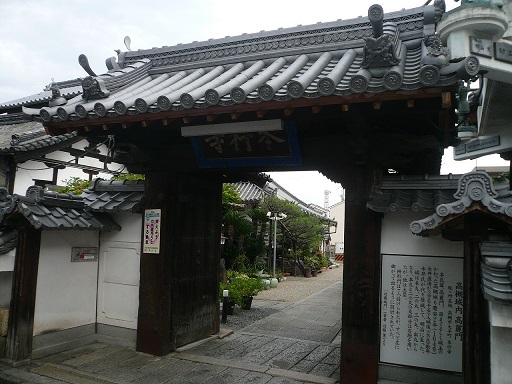
|
Rianji Temple

|
|
The main gate of Hongoji Temple is an original gate of Takatsuki Castle.
"Shiroato Historical Museum", located to the south of this area, displays the diorama of Takatsuki town and Takatsuki Castle in the Edo Age.
"Shiroato" means ruins of castle.
The museum also displays and describes the history and culture of Takatsuki during that age.
The remnants of Takatsuki Castle were completely destroyed after the Edo Age.
Currently a part of the castle is open to the public as the "Shiroato" Park.
Ruins of Takatsuki Castle Park
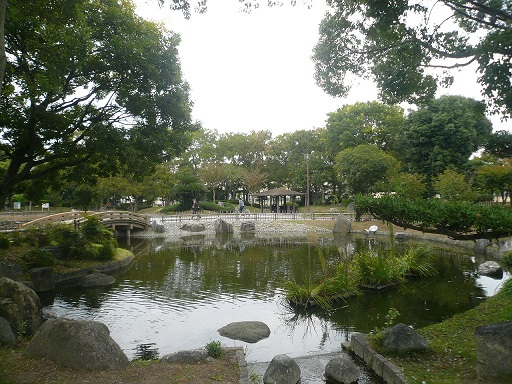
Taktsuki Castle was originally built in the early part of the 14th century.
In 1617, Takatsuki Castle was expanded and became upgraded to protect Kyoto and east Japan against Western lords who may be against TOKUGAWA Bakufu. This was after the Edo Age started and the genealogy of TOYOTOMI-family, who governed Japan before TOKUGAWA Ieyasu, came to the end.
One of the topics of the Takatsuki Castle is TAKAYAMA Ukon who was the lord of Takatsuki Castle in the Azuchi and Momoyama Age, the end of the 16th century.
TAKAYAMA Ukon was well-known as a Christian land lord.
Please visit the page of "History of Japan" for the background of the explanations:
http://handejapan19.html.xdomain.jp/History/History.html
An old house was moved to the park and is open for visitors.
This house was built in the middle of the Edo Age, around the beginning of the 18th century, and was owned by the Sasai-family.
The house was also used as for a grocery store and a rice shop, which the Sasai family ran.
|
Former Sasai-family's House
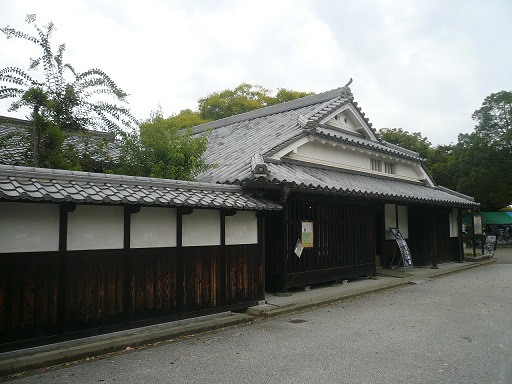
|
Inside of Former Sasai-family's House
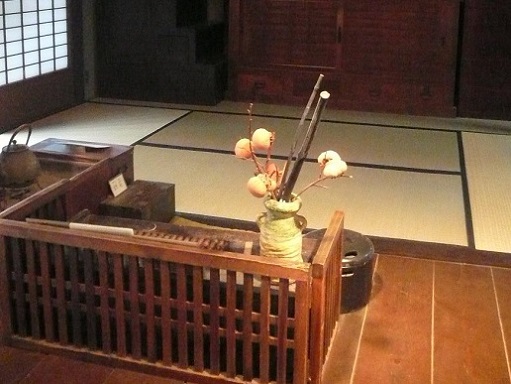
|
|
To the northwest of "Shiroato" Park, Nomi Shrine is located.
Nomi Shrine was built in the eighth century and had received respect from lords of Takatsuki Castle, except TAKAYAMA Ukon.
TAKAYAMA Ukon destroyed the shrine and built a church instead.
That was in 1574.
|
|
After TAKAYAMA Ukon moved to Funage Castle in 1585, Nomi Shrine was rebuilt in the same location.
To the north of Nomi Shrine, a church is located.
This church has nothing to do with the church that TAKAYAMA Ukon built in the 16th century, but on the wall of the church, the painting of TAKAYAMA Ukon is displayed.
TAKAYAMA Ukon propagated Christianity when he was a lord in Takatsuki. He seems to still be popular especially for Christians in Japan.
After the first western people came to Japan in 1543, Christianity was permitted. However, TOYOTOMI Hideyoshi punished preachers of the Cross with banishment in 1587. Later, Hideyoshi and TOKUGAWA Ieyasu prohibited Christianity in 1597, 1612 and 1613.
TAKAYAMA Ukon escaped to Manila in the Philippine Islands, in 1614 and died there in 1615.
|
|
|
How to get there
From Osaka, take a Hankyu line bound for Kawaramachi and get off at Takatsuki-shi Station. Or, take a JR Biwako line bound for Kyoto, and get off at Takatsuki Station.
It will take you 10 minutes or 15 minutes to the ruins of Talatsuki Castle from Takatsuki-shi Station or Takatsuki Station, respectively.
Other Historical Sites near by:
Iwashimizu Shrine
Ruins of Yodo Castle
Ruins of Osaka Castle
|
|
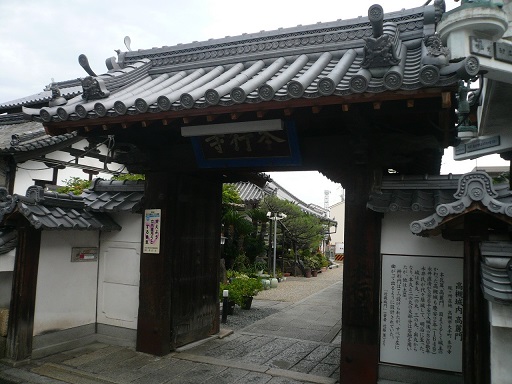
 Home Page in Japanese: "Shane's HomePage"
Home Page in Japanese: "Shane's HomePage"

 Home Page in Japanese: "Shane's HomePage"
Home Page in Japanese: "Shane's HomePage"